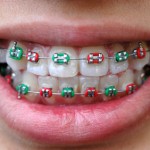
Fixed appliance orthodontic treatment typically last between 18-24 months and in recent years there has been increase in the number of studies investigating surgical and non-surgical approaches to reducing the duration of treatment times. Physical approaches have included low-energy laser level, magnetic fields, and direct electric current and recently new vibrating devices have been investigated.
The aim of this review was to evaluate the efficiency of the vibrating devices in accelerating orthodontic tooth movement.
Methods
Searches were conducted in the PubMed, Lilacs and Google Scholar databases supplemented by hand searches of the journals; European Journal of Orthodontics, American Journal of Orthodontics and Dentofacial Orthopedics, the Angle Orthodontist, and Seminars in Orthodontics and a National Library of Medicine US and library of congress. Randomised and quasi-randomised controlled trials (RCTs), and prospective controlled clinical trials (CCTs) comparing patients undergoing orthodontic treatment with and without adjunctive vibrating devices and published in English were considered.
Two reviewers independently selected studies extracted data and assess risk of bias using the Cochrane tool. Mean differences (MD) and their standard deviations were extracted, and data pooled using a random-effects model.
Results
- 6 RCTs involving a total of 226 patients were included.
- 2 RCTs were considered to be at low risk of bias 4 at high risk of bias.
- 5 out of 6 studies involved the lower arch
- 2 studies evaluated rate of canine retraction, 3 studies the lower incisor index and just 1 study assessed root resorption.
- Meta-analysis (3 studies,162 patients) showed that vibrational appliances were no more effective than control appliances in irregularity index reduction MD= -0.24(95%CI; -0.92 to 0.45).
Conclusions
The authors concluded: –
There was no significant difference between vibrating devices group and control group. There is no evidence that vibrating appliances are effective in acceleration of orthodontic tooth movement.
Comments
A good range of databases and journals were searched however restricting the inclusion to English language only may have excluded some relevant studies. The flow chart and the risk of bias assessment indicate that 6 RCTs were included but in some sections of the review a figure of 7 is mentioned. The follow up period for the included studies only ranged from 10-18 weeks and 3 of the included studies come from the same group of authors. Recently we looked at another review of this topic by Aljabaa et al (Dental Elf -17th Dec 2018) which included one fewer study and drew the same conclusion as the current review.
While the review suggests little difference in outcomes with the adjunctive vibrational devices the available evidence is of very limited quality and short duration. Well conducted and reported studies of longer duration and using common clinical and patient relevant outcomes are needed in order to assess effectiveness.
Links
Primary Paper
Elmotaleb MAA, Elnamrawy MM, Sharaby F, Elbeialy AR, ElDakroury A. Effectiveness of using a Vibrating Device in Accelerating Orthodontic Tooth Movement: A Systematic Review and Meta-Analysis. J Int Soc Prev Community Dent. 2019 Jan-Feb;9(1):5-12. doi: 10.4103/jispcd.JISPCD_311_18. Epub 2019 Feb 14. Review. PubMed PMID: 30923687; PubMed Central PMCID: PMC6402256.
Other references
Dental Elf -17th Dec 2018
Vibrational devices: Do they accelerate orthodontic tooth movement?
Dental Elf -6th July 2015
